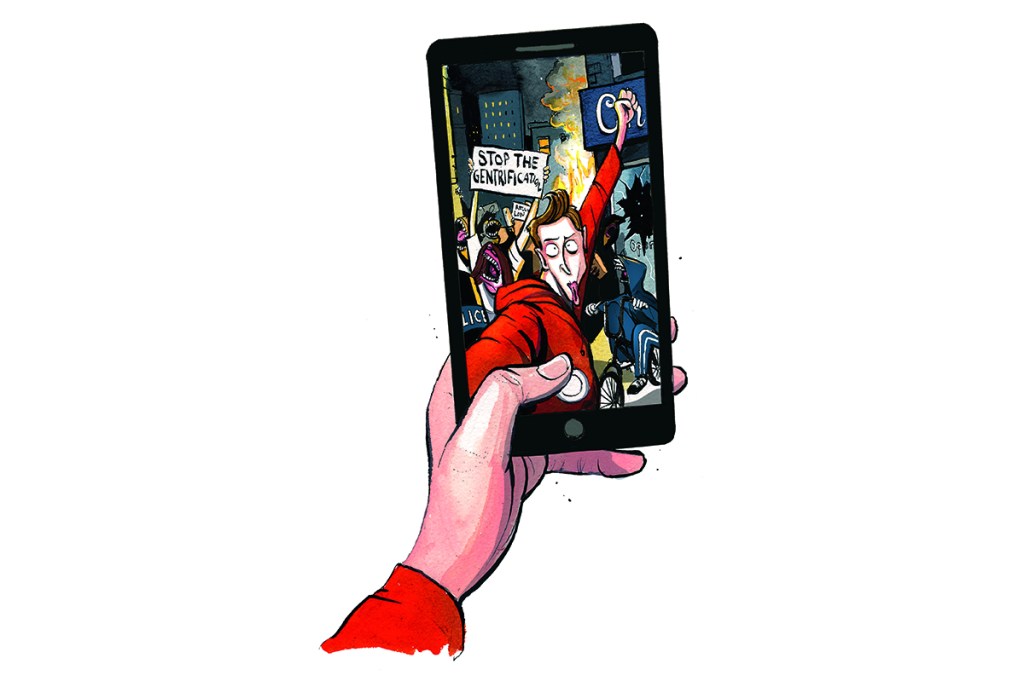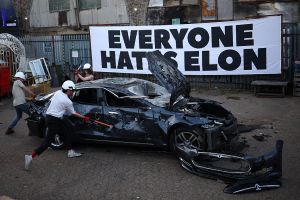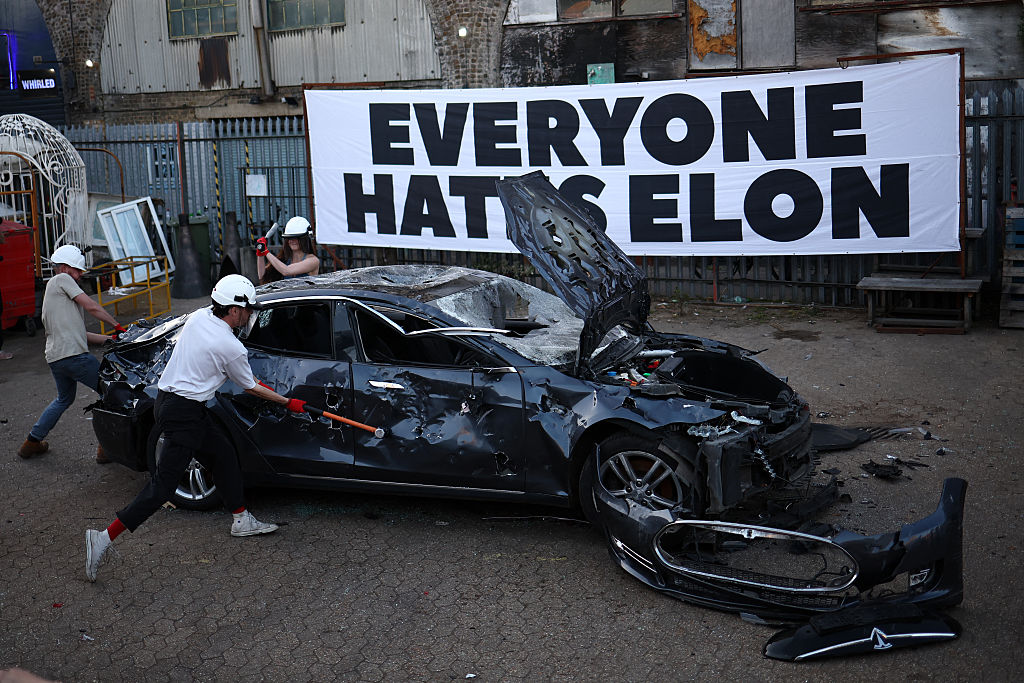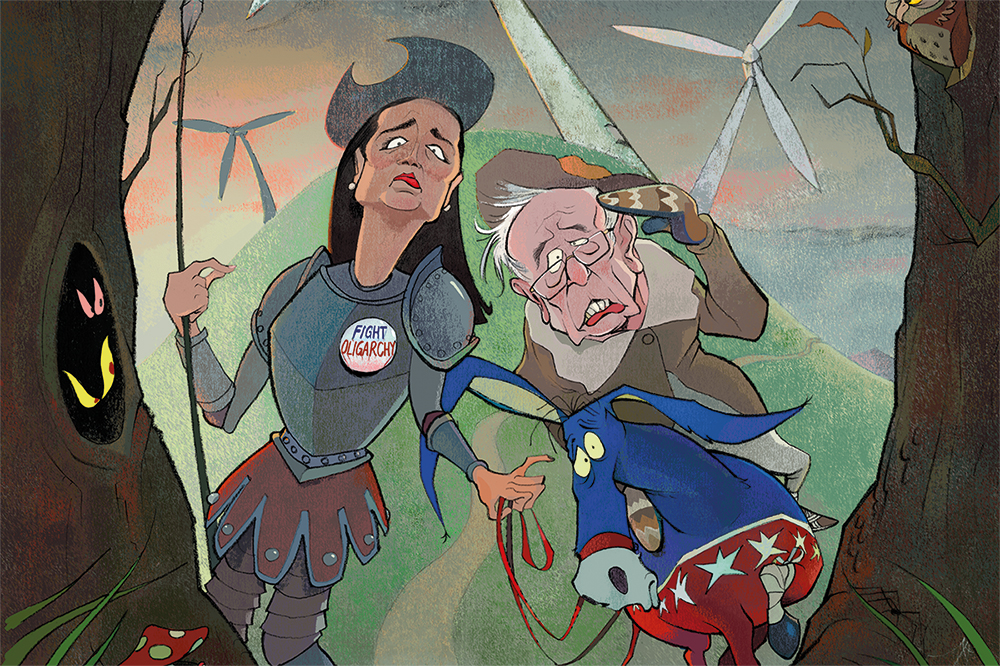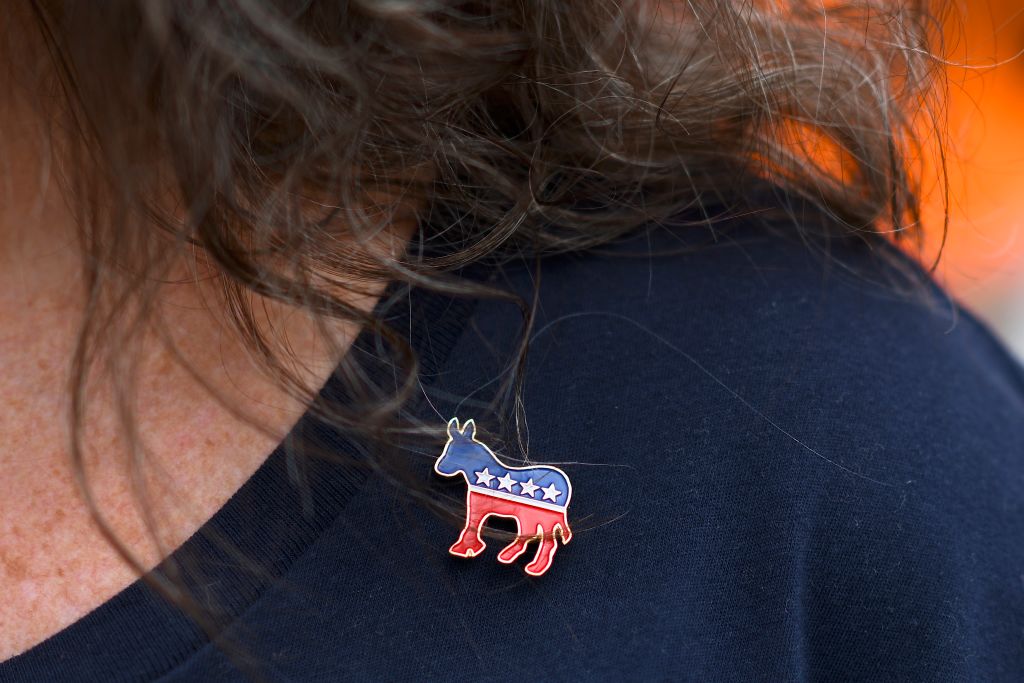It was inevitable that the wave of destructive rioting and looting that has swept through cities that are almost all governed by progressive Democrats, triggered initially by outrage over the sickening death in police custody of George Floyd, would be compared to the American urban riots of earlier generations. But the parallels miss profound differences in the underlying economic and social dynamics.
The Detroit and Newark riots of 1967 and the Los Angeles riot of 1992, for example, took place in cities suffering from the effects of deindustrialization. Los Angeles is not often thought of as a major manufacturing center, but Southern California had a flourishing aerospace industry that went into decline following the Cold War. The children and grandchildren of prosperous industrial workers found themselves stranded in urban regions whose economies shriveled as manufacturing shut down or moved elsewhere.
The violent riots that have taken place in cities like New York are quite different. Most of the cities that are being trashed by opportunistic looters, leftist radicals and criminal gangs lost significant manufacturing long ago. Some of them, like Washington, DC, were never industrial centers. These post-industrial cities are centers of finance like New York, tech like San Francisco, or government like Washington, not centers of physical production, most of which in the 21st century takes place on cheap land on the outskirts of cities or in rural areas.
The economy of America’s major hub cities is based not on profits from the sale of manufactured goods, but on economic rents of various kinds. Interest payments flow to financiers on Wall Street. Royalties for the use of intellectual properties flow to Silicon Valley tech firms and individual tech tycoons. Similar royalties flow to the Hollywood-based entertainment industry. Social media platforms like Facebook and Twitter and search engines like Google derive quasi-rents from their near-monopolies of online advertisements.
These three industries — Wall Street, Silicon Valley and Hollywood — provide the donor base for the Democratic party, a political machine that has virtually unchecked one-party control of most larger cities in the United States. Industries that make physical products and engage in physical services — national manufacturing, oil and gas, agribusiness, logistics — tend to contribute to the Republican party.
The political economy of America’s progressive Democratic cities is an extreme version of the very trickle-down economics that Democrats like to denounce. Financial rents and intellectual property payments flow from around the US and the world to billionaires and firms in New York, San Francisco, Los Angeles and other ‘blue’ cities. Some of the rents that go to the Democratic rich are then shared as payoffs to constituencies that get out the vote for Democratic machine politicians, of which the most important are the public-sector employee and teachers’ unions. Urban police unions, whose members are heavily working class and often conservative, sometimes have a tense relationship with left-liberal Democratic machines.
Another important constituency of the urban Democratic patronage machine in big cities and college towns consists of the college-educated professionals who work in the nonprofit sector, the media and the universities. These sectors depend on grants from billionaires like George Soros, Michael Bloomberg and Tom Steyer, as well as new organizations like Soros’s Open Society foundations, the Gates Foundation, Bloomberg Philanthropies, the older Ford and Rockefeller Foundations and major finance firms and tech firms.
Smart Democratic politicians know that there are limits to the generosity of the rentiers and firms who fund their special interest payoff machines. There are also limits to the willingness of socially liberal urban professionals to pay taxes. To reassure them, Joe Biden, the presumptive nominee of the Democratic party, has announced that if he is elected president, taxes will not go up on any household that earns less than $400,000 a year.
Another concession to their professional-class supporters made by Democratic politicians is the state and local tax (Salt) deduction. For decades, this federal tax deduction, which increased with income, provided a federal tax subsidy to offset the living costs of rich and affluent residents of expensive Democratic cities, particularly in New York and California. Noticing this, the Republican party, which controlled both houses of Congress in 2017, eliminated the Salt deduction. House majority leader Nancy Pelosi (net worth $34-$160 million, according to PolitiFact) has made lifting the Republican- imposed cap on the Salt deduction to benefit the rich and upper-middle class a priority of congressional Democrats.
As for super-rich Democratic donors, their interests are looked after as well. Senate Democratic minority leader Chuck Schumer has long defended the carried interest provision, which allows hedge-fund managers to be taxed at capital gains tax rates that are lower than income tax rates. Taxing the capital gains income of rich rentiers at the same rate that the income of wage-earners is taxed is not on the table, and will not be, as long as the Democratic party is funded by donors whose income is derived largely from their investments.
The Democratic patronage machine that runs America’s post-industrial cities, then, has paid off public-sector unions and college-educated professionals in the private, public and nonprofit sectors, while being careful not the bite the hands of the rich rentiers and firms who feed it. But the riots show that urban Democrats neglected to shake down their donors to pay off three groups that make up much of the population in Democratic cities: the black poor, poor immigrants and recent college graduates.
In many Democratic cities, gentrification has pushed African Americans out to suburbs and replaced them with affluent whites. Post-industrial tech and finance and government meccas like New York, San Francisco, Washington and Austin have whitened over time. But pockets of black poverty, left over from the era of the Great Migration from the South and the industrial period, remain, sometimes frozen in place by local public housing and public assistance programs.
Immigrant diasporas make up another large urban constituency that has not shared the wealth of the rentier elite. In both New York and San Francisco, around 36 percent of the population is foreign-born. While some immigrants belong to the professional-managerial class, immigrants, both legal and illegal, dominate the lowest-paid economic sectors. Many of them provide luxury services to the urban oligarchs, through their jobs as restaurant workers, nannies, health aides and apartment and hotel staff.
Finally, a few ‘superstar’ cities like New York and San Francisco have attracted, in the last generation, growing numbers of young college-educated Americans, disproportionately white and Asian American, from across the country. In the hope of becoming rich startup founders or media stars, they tolerate paying high rents on top of their student loans in their twenties in order to dwell in gentrified bohemian neighborhoods from which working-class residents have been economically cleansed. Many of their hopes for upward mobility were unrealistic, even before the economic collapse caused by the pandemic and lockdown.
The historians of the future may debate the exact causes of the Democratic city riots of 2020. Was it genuine distress at the police murder of George Floyd? Frustration at the preceding two months of quarantine during the COVID-19 pandemic? Opportunism by criminal gangs? Or the ideological activism of organized leftist radicals and perhaps a few far-right inciters, sheer devilry in the power vacuums that occurred when progressive Democratic city governments refused to enforce laws against vandalism? Judging from news coverage, the looting and vandalism have mostly been carried out by young members of urban racial-minority groups, along with young white college-educated scions of the liberal gentry — groups which tend to vote for Democrats but which, unlike public-sector unionists and politically influential professionals, did not share the wealth of the post-industrial rentier cities before the pandemic-induced collapse.
Why not? Part of the problem involves the limits of Democratic identity politics, which treats race and gender categories as internally classless ‘communities’ instead of mere abstract demographic categories. Whatever the merits, policies of diversity, equity and inclusion that promote more representation of members of racial minorities on corporate boards, in university faculties, on student bodies and in congressional districts do little or nothing to improve the incomes or living standards of the majority of urban nonwhites and immigrants, most of whom, like most white Americans, are working-class people whose education ends with high school at best.
[special_offer]



